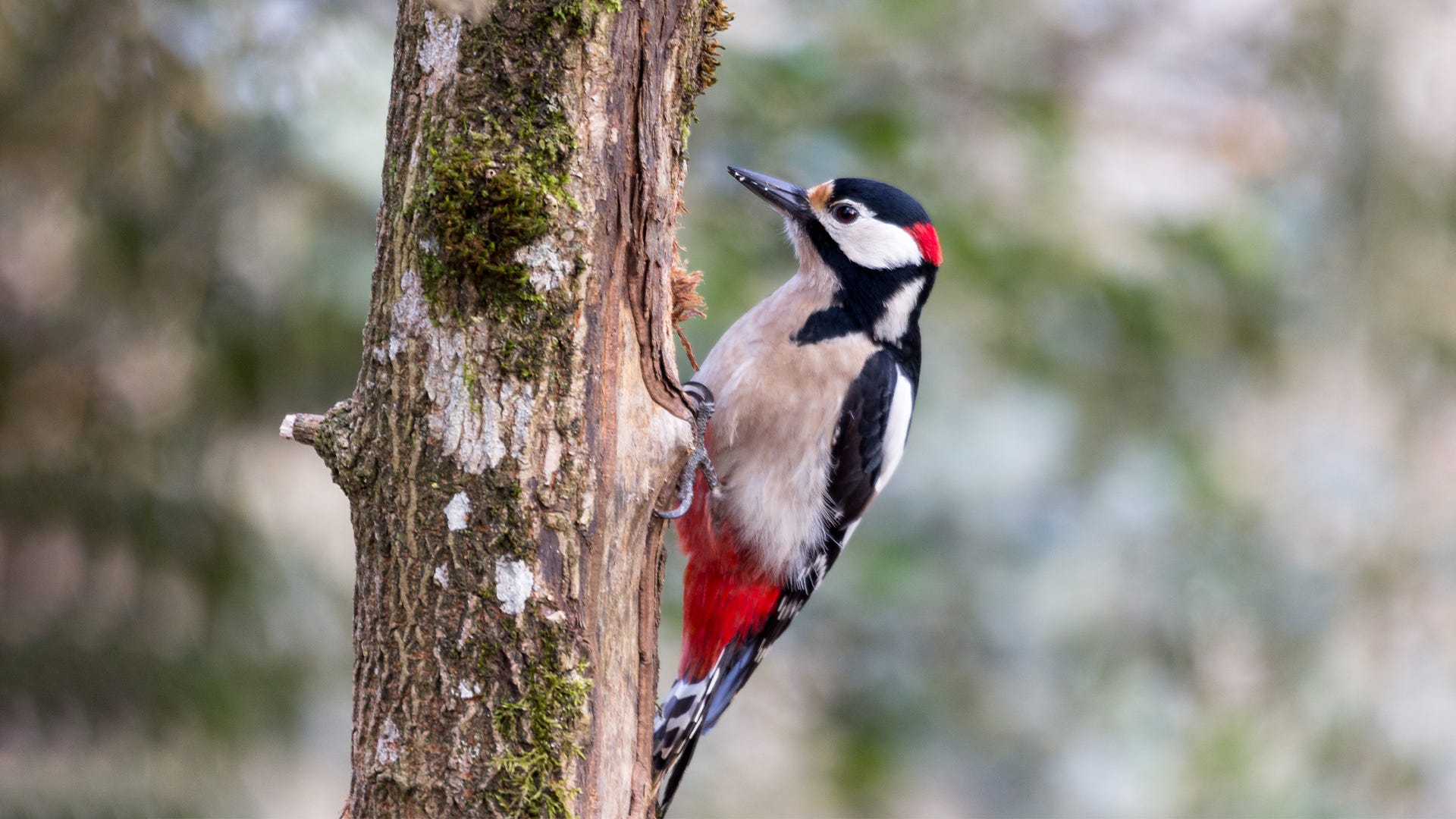Woodpeckers in Florida: Nature, Ecology, and Conservation
Woodpeckers in Florida: Nature, Ecology, and Conservation
Blog Article
Woodpeckers Unleashed: Checking Out the Wonders of These Proficient Tree Mountain Climbers
Woodpeckers, with their distinctive markings and rhythmic drumming echoing with wooded areas, hold a special area in the bird world - Woodpeckers in Florida. As we delve into the elaborate information of woodpeckers' nesting habits, feeding methods, and the continuous preservation initiatives to shield these exceptional birds, a deeper appreciation for their area in nature unfolds.
Composition and Adaptations
When checking out the anatomy and adjustments of woodpeckers, one can observe amazing features that make it possible for these birds to prosper in their specialized environmental particular niche. Woodpeckers are furnished with a collection of special anatomical features that assist them in their woodpecking habits. Among one of the most popular functions is their solid, chisel-like beak, which is specialized for boring right into wood to reveal bugs or develop nesting tooth cavities. This beak is supported by solid neck muscles and a very developed head framework that functions as a shock absorber, allowing woodpeckers to continuously peck at trees without causing brain injury. In addition, woodpeckers have zygodactyl feet, with two toes encountering ahead and two facing backward, supplying a firm grip on tree trunks while they look for food or drum for interaction.
Furthermore, woodpeckers have an one-of-a-kind tongue framework that is long, barbed, and sticky, allowing them to remove insects from holes in timber. This specialized adjustment permits woodpeckers to make use of a food resource that is inaccessible to many various other bird types. On the whole, the makeup and adaptations of woodpeckers display the impressive transformative remedies that have permitted these birds to grow in their arboreal habitat.
Drumming Behavior
Having explored the composition and adjustments of woodpeckers, the focus currently shifts to understanding their drumming actions, a distinctive aspect of their communication and territorial screens. Drumming is a vital kind of communication amongst woodpeckers, serving multiple objectives such as establishing regions, drawing in companions, and signaling alarm system. Each woodpecker species has a special drumming pattern that aids individuals recognize participants of their very own varieties and differentiate them from competitors or killers.
Woodpeckers create drumming audios by swiftly pecking on resonant surfaces such as dead trees, utility posts, or also steel things, developing a series of balanced beats. The strength and speed of drumming can vary based on the purpose; for example, a rapid drumming sequence may represent aggression in the direction of trespassers, while a slower and softer drumming pattern might suggest courtship (Woodpeckers in Florida). In addition, woodpeckers might readjust the frequency and period of their drumming to share particular messages properly
Nesting Practices
Discovering the nesting behaviors of woodpeckers discloses remarkable insights into their reproductive actions and habitat choices. Woodpeckers are known for their one-of-a-kind nesting choices, often digging deep into tooth cavities in trees to produce sheltered rooms for increasing their young. These dental caries serve not only as a nesting site yet also as a safe and secure haven from predators and harsh weather condition.
Woodpeckers show a high level of integrity to their nesting websites, typically returning to the same place time after time. This habits highlights the importance of appropriate environment schedule for their reproductive success. The option of a nesting website is critical for woodpeckers, with elements such as tree varieties, height, and degeneration phase playing significant duties in their decision-making procedure.
Surprisingly, some woodpecker species are known this content to dig deep into numerous dental caries within their region, offering themselves with alternative nesting alternatives. This strategy might function as a type of insurance policy against possible risks or disruptions to their primary nesting website.

Feeding Methods
Woodpeckers use a selection of specialized feeding strategies to procure their main food sources. Among one of the most distinct feeding habits of woodpeckers is drumming, which involves fast pecking on trees to discover pests beneath the bark. This drumming not only aids them situate target yet likewise acts as a way of communication with various other woodpeckers. Woodpeckers have solid, chisel-like beaks that permit them to pierce right into timber effortlessly. As soon as a hole is created, they use their long, barbed tongues to extract bugs such as ants, beetles, larvae, and spiders. These tongues are covered with sticky saliva that helps trap the victim. Woodpeckers are additionally recognized to dig deep into cavities in trees to gain access to hidden insect larvae or sap. Some types, like the acorn woodpecker, shop nuts in specially produced holes called granaries. This tactical storing of food helps them make it through throughout food scarcity periods. Woodpeckers are truly impressive in their feeding strategies, showcasing adaptability and intelligence in acquiring their nutrition.
Preservation Efforts
Among the detailed feeding strategies exhibited by woodpeckers, the preservation initiatives targeted at safeguarding these fascinating birds play a critical duty in protecting their habitats and populations. Woodpeckers deal with various threats to their survival, consisting of environment loss as a result of deforestation, climate modification modifying their environments, and accidents with synthetic frameworks such as structures and automobiles - Woodpeckers in Florida. Guardians are proactively working to deal with these difficulties and make sure the long-term health of woodpecker types

Education and public awareness projects are additionally essential parts of woodpecker conservation efforts. By raising awareness regarding the relevance of these birds in keeping healthy woodland environments, preservationists can garner assistance for environment conservation initiatives and advertise liable land management practices. Through joint efforts in between scientists, policymakers, and neighborhood neighborhoods, we can work together to protect a future where woodpeckers thrive in their natural environments.
Verdict

Report this page